- Joined
- Aug 30, 2017
- Messages
- 35
Hello all,
I'm new here and have already tak n a lot away from the forum. I probably don't have much to contribute, but maybe this will help someone out there.
I used a standard MC-60 controller and treadmill motor with a simple tach kit off amazon that uses a Hall effect sensor. I got a little electronics enclosure to house the tach, pot, wiper on/off switch (start and stop with out losing your speed). I mounded the sensor on the top of the gear train cover and use a small rare earth magnet on the spindle nut.
I'm using a standard sheave a bored to 17mm to for the pulley on the motor. The fan is a simple computer fan (120v) wired to the on off switch. I made a flange and welded it to a tube and smoothed it with body filler to transition. I still have to neaten up the wiring on to the fan and motor.
I made a plywood cabinet with two drawers to house some tooling and such, it sits on top of a rolling cart so I can tuck it away when not in use. I'm going to make something to anchor the cart when using the lathe I think. Any ideas are welcome!
I'll take some more pics of the control board hidden behind a drawer shortly
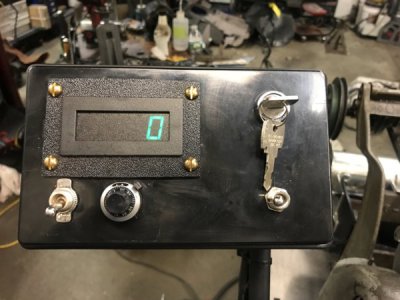
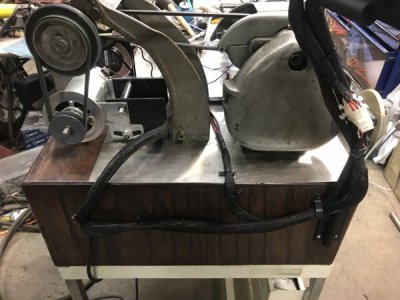
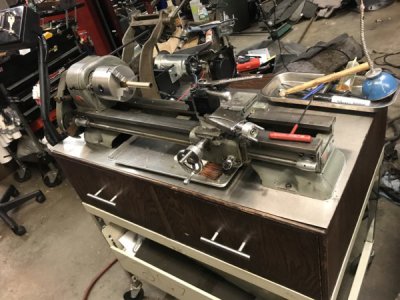
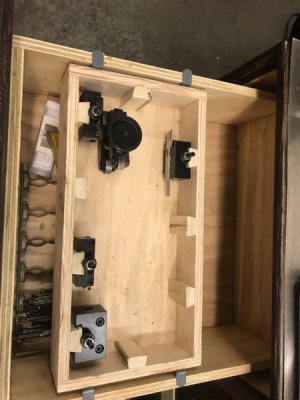
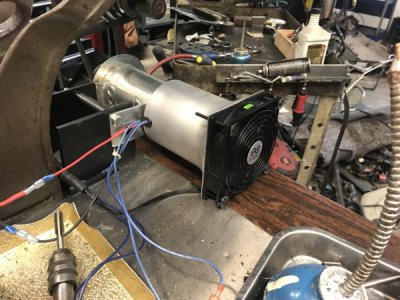
I'm new here and have already tak n a lot away from the forum. I probably don't have much to contribute, but maybe this will help someone out there.
I used a standard MC-60 controller and treadmill motor with a simple tach kit off amazon that uses a Hall effect sensor. I got a little electronics enclosure to house the tach, pot, wiper on/off switch (start and stop with out losing your speed). I mounded the sensor on the top of the gear train cover and use a small rare earth magnet on the spindle nut.
I'm using a standard sheave a bored to 17mm to for the pulley on the motor. The fan is a simple computer fan (120v) wired to the on off switch. I made a flange and welded it to a tube and smoothed it with body filler to transition. I still have to neaten up the wiring on to the fan and motor.
I made a plywood cabinet with two drawers to house some tooling and such, it sits on top of a rolling cart so I can tuck it away when not in use. I'm going to make something to anchor the cart when using the lathe I think. Any ideas are welcome!
I'll take some more pics of the control board hidden behind a drawer shortly






